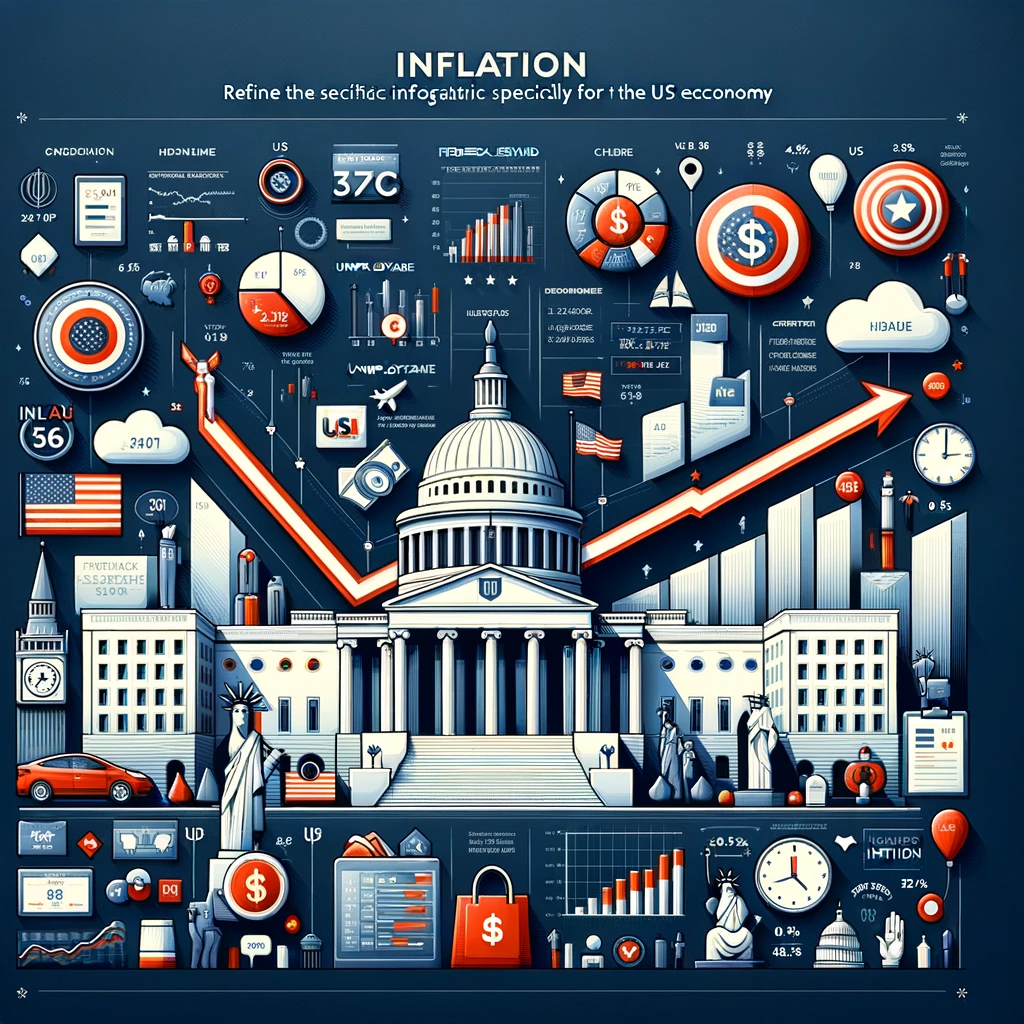Navigating US Inflation: Trends and Expectations Analysis
2023-07-03

Consumer Price Index (CPI) Shows Notable Downward Trend, Signaling Potential Easing of Inflationary Pressures
The latest monthly data on the Consumer Price Index (CPI) for All Urban Consumers All Items in U.S. City Average shows a notable downward trend in inflation. In May 2023, the year-over-year change in CPI stood at 4.1%, down from 7.7% in October 2022. This downward trajectory may indicate a moderation in the rate of price increases for consumer goods and services. Comparing this to the average year-over-year changes in previous years, the contrast is stark. In 2021 and 2022, the CPI demonstrated sharp escalations, reaching 4.7% and 8.0% respectively, then subsiding to 5.3% in 2023. This indicates a departure from the previous upward trajectory of inflation, suggesting a potential alleviation of the inflationary pressures that have characterized recent months. Such a decline in the CPI could imply several things. First, it may suggest a gradual stabilization of consumer prices, which could positively impact consumers' purchasing power and cost of living. Second, it could ease concerns about the sustainability of inflation at elevated levels, providing a measure of relief to the Federal Reserve and policymakers alike. Lastly, businesses may find a more stable pricing environment, potentially leading to increased consumer confidence and overall economic stability. To summarize, the recent downtrend in the Consumer Price Index indicates a potential easing of inflationary pressures from the highs witnessed in 2022, offering a glimmer of hope for a more stabilized economic environment. It would be prudent to continue monitoring future CPI releases to ascertain whether this downtrend is a sustained phenomenon or a temporary blip in the broader inflationary landscape.
Volatility in Sticky Price Consumer Price Index (CPI) Reflects Unpredictable Inflation Expectations
The Sticky Price Consumer Price Index (CPI), which reflects the prices of goods and services that change infrequently, has displayed significant volatility in recent months. In June 2022, the index recorded a year-over-year change of 108.3%, which rapidly escalated to 152.7% by August 2022. However, from September 2022 to May 2023, the index exhibited a downward trend, decreasing to 20.6%. This fluctuation contrasts sharply with the relative stability experienced in preceding years, such as the average year-over-year changes of 8.2% in 2018, 5.0% in 2019, and the negative 11.3% in 2020. Notably, the steep increase in 2022 to 130.2% was followed by a notable decline to 42.8% in 2023. These variations might indicate sporadic shifts in future inflation expectations, potentially influencing consumer sentiment and spending behavior. The recent deceleration of the index could alleviate concerns about sustained inflationary pressures, although continued vigilance is prudent given the unpredictable nature of economic dynamics.
University of Michigan's Inflation Expectation Data Shows Declining Median Expected Price Change and Potential Implications for Consumer Spending and Economic Growth
The latest monthly data on the University of Michigan's Inflation Expectation, specifically the median expected price change over the next 12 months from the Surveys of Consumers, shows some notable trends and deviations. The data indicates a gradual decline in median expected price change from July 2022 (5.2%) to June 2023 (3.3%). The trend reveals a decrease in consumer expectations regarding inflation over this period. The most significant deviation from this trend occurred between January 2023 and March 2023, where the median expected price change dropped from 3.9% to 3.6%, indicating a sudden decrease in inflation expectations during that period. These changes are essential as they provide insights into consumer sentiment regarding future price movements. The declining inflation expectations may suggest a potential reduction in consumer spending due to perceived future price stability, which could have implications for overall economic growth and monetary policy decisions. It's important to monitor if this trend persists and its impact on inflationary pressures in the U.S. economy.
February 2024 Breakeven Inflation Rate Data from Federal Reserve Bank of St. Louis
The latest monthly data on the Breakeven Inflation Rate, sourced from the Federal Reserve Bank of St. Louis, reveals the following figures for February 2024: - The 5-Year Breakeven Inflation Rate stands at 2.35%. - The 10-Year Breakeven Inflation Rate is recorded at 2.3%. - The 30-Year Breakeven Inflation Rate is reported at 2.23%. These figures offer valuable insights into market expectations regarding future inflation. The 5-year rate indicates an average expected inflation rate of 2.35% over the next 5 years, while the 30-year rate suggests a slightly lower expected average inflation rate of 2.23% over the long term. This data is critical for investors, policymakers, and financial analysts as it provides indications of market sentiment and expectations regarding inflation, which in turn can influence investment decisions, monetary policy, and economic outlook assessments.
June 2023 Expected Inflation Rates Across Time Horizons by the Federal Reserve Bank of Cleveland
The latest monthly data from the Federal Reserve Bank of Cleveland indicates the expected inflation rates for various time horizons. As of June 2023, the expected inflation rate for a 1-year horizon is 1.31%, while for a 2-year horizon, it stands at 1.53%. Looking further ahead, the expected inflation rate for a 5-year horizon is 1.58%, and for a 10-year horizon, it is 1.66%. These estimates are derived from a model that incorporates Treasury yields, inflation data, inflation swaps, and survey-based measures of inflation expectations. It's worth noting that these figures provide valuable insights for investors, policymakers, and businesses in making informed decisions regarding financial planning, pricing strategies, and monetary policy adjustments.
